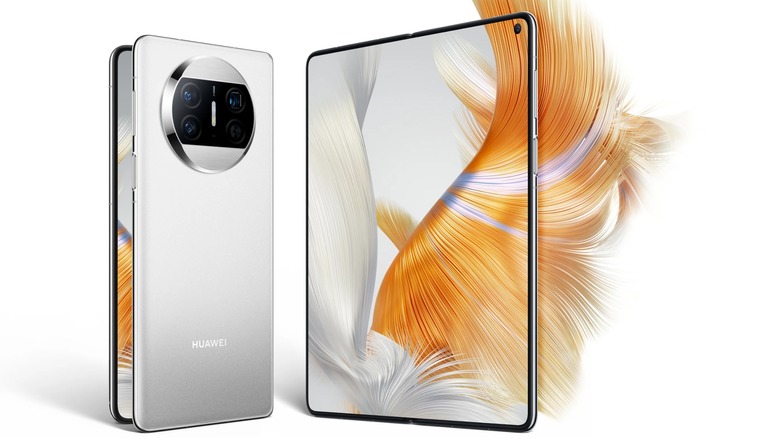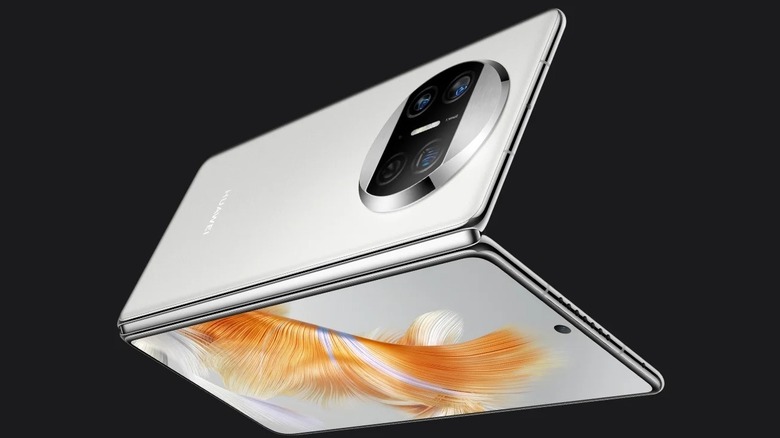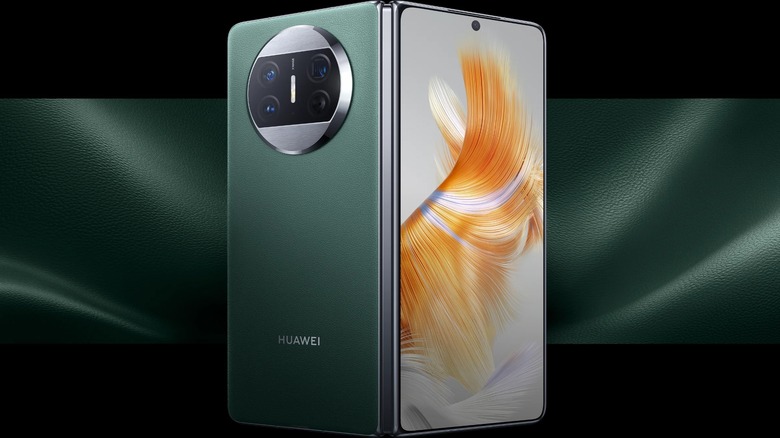Huawei Reveals New Foldable Smartphone To Rival Samsung's Galaxy Z Fold
Until 2019, Huawei was among the world's largest smartphone makers. However, since being banned from using U.S.-based technologies in 2019 because of its alleged ties with the Chinese military, Huawei has faced multiple issues affecting its ability to conduct business outside China. Huawei's smartphone division was among the worst affected after devices made by the company lost access to Google Services.
Despite being unable to sell its foldable phones in significant numbers outside of China, Huawei continues its efforts in the foldable segment. As a result, the company recently launched its latest foldable — the Huawei Mate X3 — in China.
Huawei has continued making smartphones for consumers in its domestic market, and was among the first to launch foldable phones alongside Samsung. Huawei's journey with foldable smartphones began with the Huawei Mate X (2019), and has since regularly updated the Mate X lineup with new models. Huawei launched the Mate Xs in 2020, the Mate X2 in 2021, and the Mate Xs 2 in 2022, creating an expansive catalogue of impressive foldable smartphones.
In addition to these vertically folding phones, Huawei also launched a clamshell-style foldable phone called the Huawei P50 Pocket in late 2021. However, Huawei's newest foldable phone boasts several upgrades over its predecessor.
Huawei Mate X3: Everything you need to know
Huawei has addressed a significant pain point associated with modern full-sized foldable phones: the weight. At just 239 grams, the Huawei Mate is significantly lighter than the Samsung Galaxy Z Fold 4 (263 grams), and roughly weighs the same as the much smaller OPPO Find N2 foldable.
At just 5.3mm, the Mate X3 is thinner than even the Apple iPhone 14 Pro Max. Additionally, the Huawei Mate X3 also reverts to an inward folding display, which is a departure from last year's Mate XS 2 — which had a single wraparound screen design.
The inner foldable display used on the device is a flexible OLED 120Hz LTPO panel that measures 7.85 inches across, sporting a resolution of 2496x2224 pixels. The external display of the Mate X3 is a 6.4-inch OLED panel, again with support for 120Hz refresh rate.
The phone also gets IPX8 rating, making it the only foldable phone besides the Galaxy Z Fold 4 to have that rating. The camera setup on the Mate X3 includes a 50MP main camera, a 13MP ultra-wide camera, and a 12MP periscope camera. In addition, Huawei has also thrown in an 8MP front-facing camera for selfies.
Huawei Mate X3: Pricing and availability
Besides the non-availability of Google services, the Mate X3 is also somewhat crippled on the network front, as it only supports 4G networks. The phone comes powered by the 4G version of the Qualcomm Snapdragon 8+Gen 1 chip, which has been around for almost a year now. The phone also packs a reasonably sized battery, and while the standard edition of the phone gets a 4800 mAh battery, a more expensive Collector's Edition variant ships with a 5060 mAh battery.
Other noteworthy features on the phone include support for a new two-way satellite messaging functionality, which is somewhat similar to the satellite messaging feature that debuted on Apple's iPhone 14 lineup. Huawei's foldable is also quite loaded on the connectivity front (outside of 5G), and includes support for Wi-Fi 802.11a/b/g/n/ac/ax, Bluetooth 5.3, GPS, NFC, and a USB Type-C port for charging.
Interestingly, Huawei hasn't shied away from charging a steep premium for the Mate X3 despite the lack of 5G. The company has priced the base version of the phone (8GB + 256GB) at 17,999 yuan ($2600), while the price for the 8GB + 512GB variant goes up to 18,999 yuan ($2780). In its current state, there is no chance of the Mate X3 being sold outside of China.


